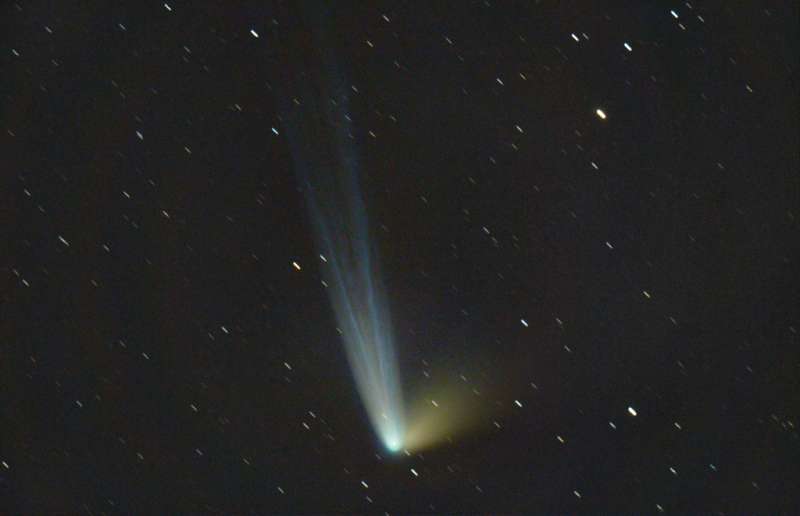Credit & Copyright: Kevin Parker
Explanation:
After
grazing the western horizon on northern summer evenings
Comet PanSTARRS (also known as C/2014 Q1)
climbed higher in southern winter skies.
A
visitor to the inner Solar System discovered in August 2014
by the prolific panSTARRS survey,
the comet was captured here on July 17.
Comet and colorful tails
were imaged from Home Observatory in Mackay, Queensland, Australia.
The field of view spans just over 1 degree.
Sweeping quickly across a the sky
this comet PanSTARRS
was closest to planet Earth about 2 days later.
Still, the faint stars of the constellation Cancer left short trails
in the telescopic image aligned to track the comet's rapid motion.
PanSTARRS' bluish ion tails stream away from the Sun, buffetted
by the solar wind.
Driven by
the pressure of sunlight, its more diffuse yellowish dust
tail is pushed outward and lags behind the comet's orbit.
A good
target for binoculars from southern latitudes,
in the next few days the comet will sweep through skies near
Venus, Jupiter, and bright star Regulus.
1999 2000 2001 2002 2003 2004 2005 2006 2007 2008 2009 2010 2011 2012 2013 2014 2015 2016 2017 2018 2019 2020 2021 2022 2023 2024 2025 |
Yanvar' Fevral' Mart Aprel' Mai Iyun' Iyul' Avgust Sentyabr' Oktyabr' Noyabr' Dekabr' |
NASA Web Site Statements, Warnings, and Disclaimers
NASA Official: Jay Norris. Specific rights apply.
A service of: LHEA at NASA / GSFC
& Michigan Tech. U.
|
Publikacii s klyuchevymi slovami:
comet - komety - kometnye hvosty
Publikacii so slovami: comet - komety - kometnye hvosty | |
Sm. takzhe:
Vse publikacii na tu zhe temu >> | |
